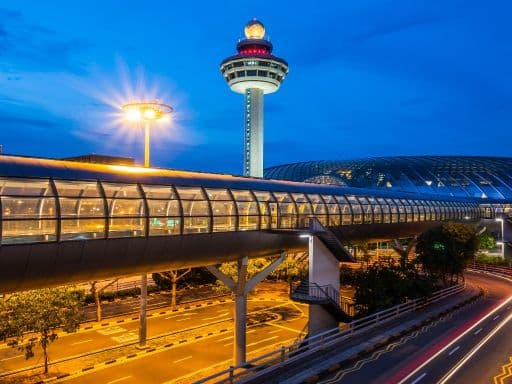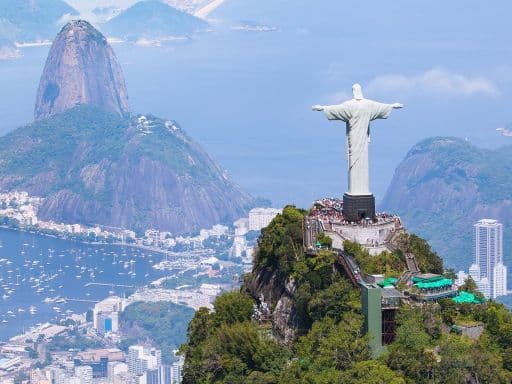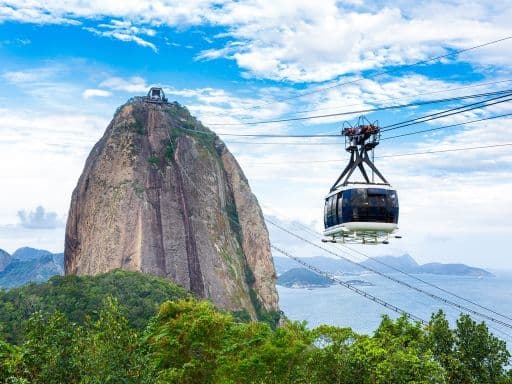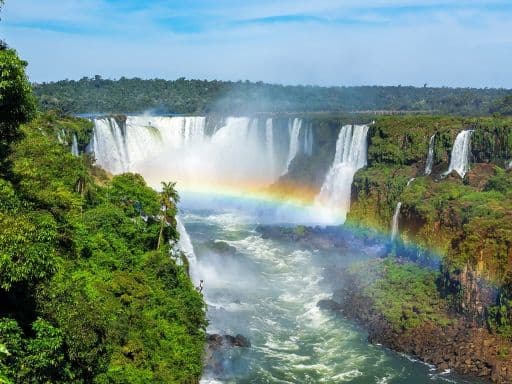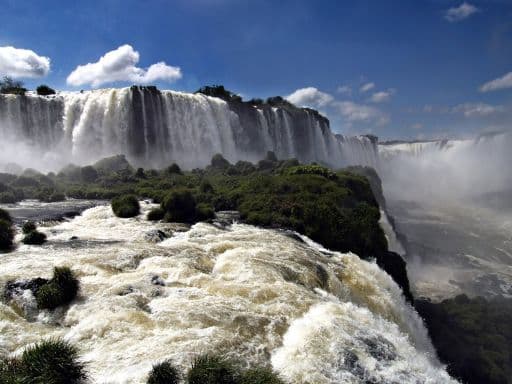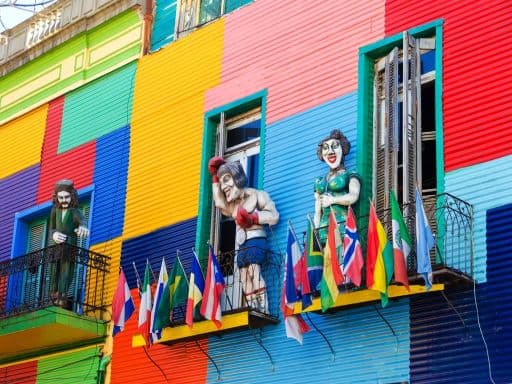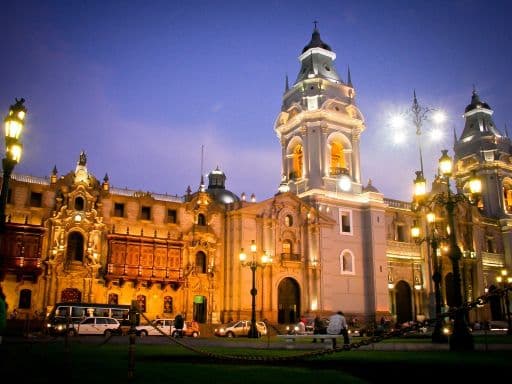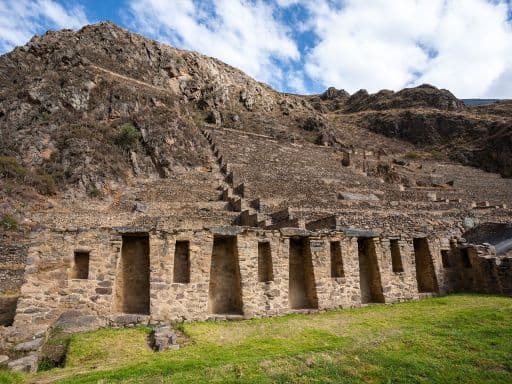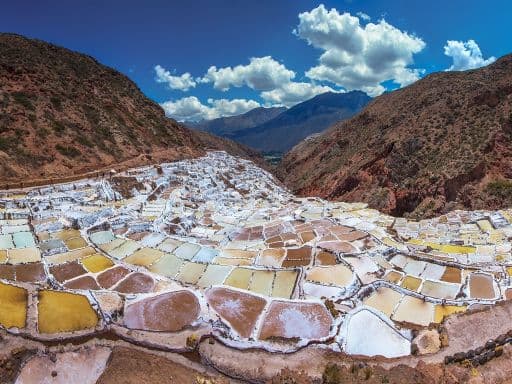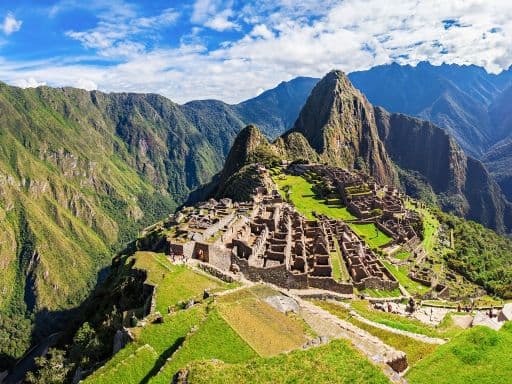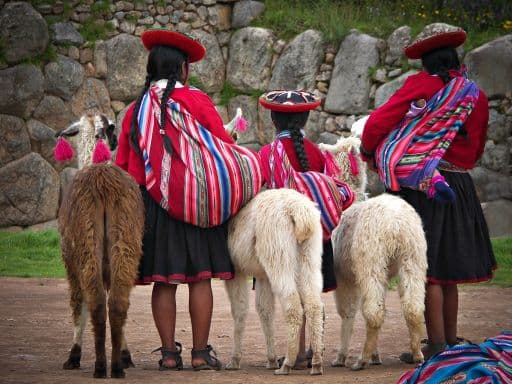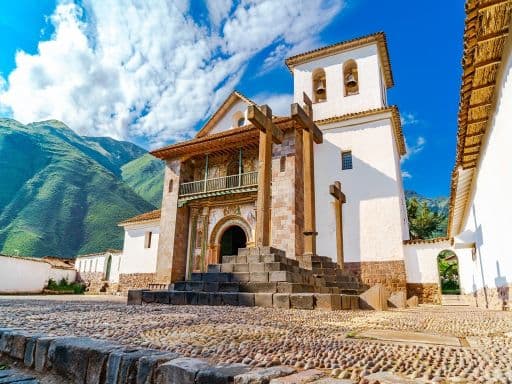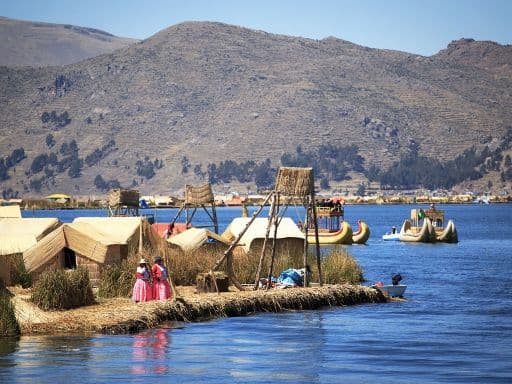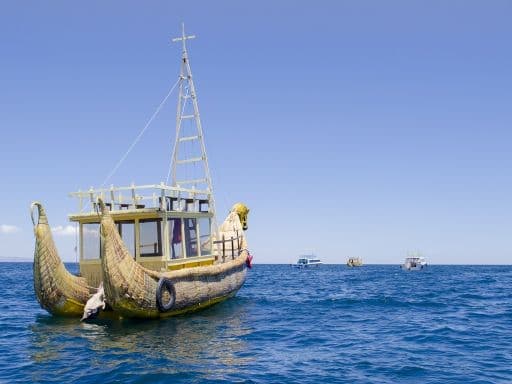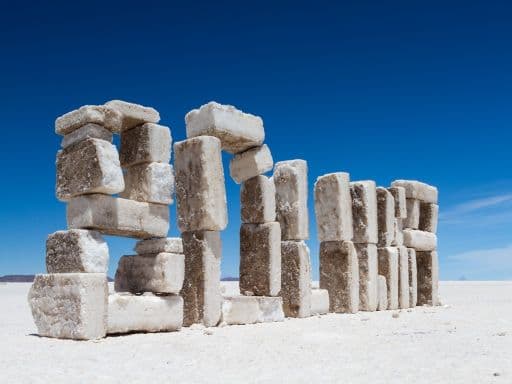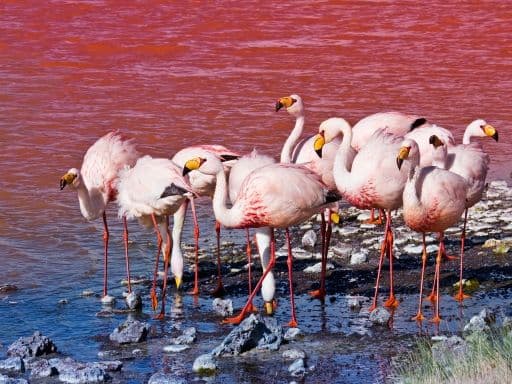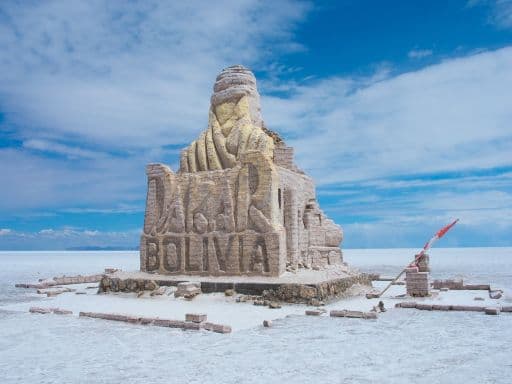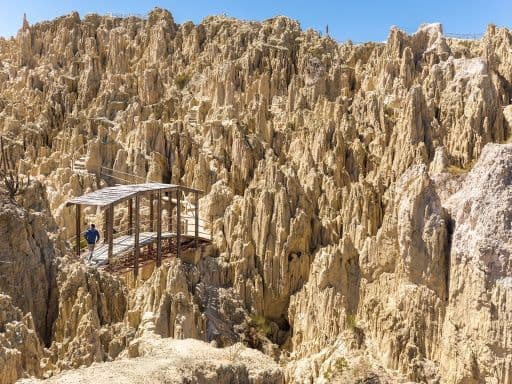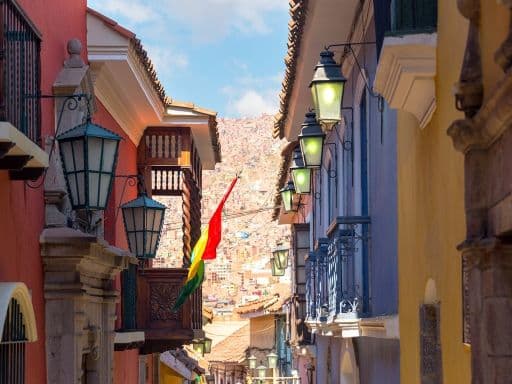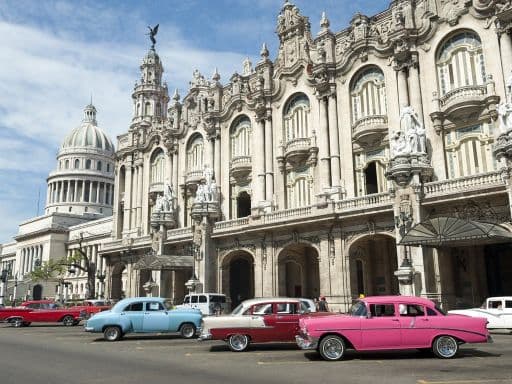TRIP HIGHLIGHTS
- Most comprehensive itinerary. No optional tours.
- 52 Meals: 19 Breakfast, 16 Lunches, 17 Dinners
- Tour Iguazu Falls on both Brazilian & Argentinian sides
- Jetboat safari to get close and personal to the Iguazu Falls
- Visit the iconic Moray ruins & salt flats in the Sacred Valley
- Discover Machu Picchu
- Tour world’s highest Lake Titicaca
- Explore underground Bueno Aires
- Enjoy a day at an estancia
- 3 nights to explore Bolivia’s altiplano and salt flats
ITINERARY
Begin our tour of Rio de Janeiro with a photo stop at the renowned ‘Maracana’, one of the world’s largest football stadiums and host for the World Cup final in 2014, drive pass Cathedral, Flamingo Park, World War II Memorial, Copacabana Beach and Sambodromo, the heart of Rio’s famous Carnival celebrations. Check out the brightly coloured tiles of the world-famous Selaron Steps, one of Rio’s most distinctive landmarks.
Enjoy a cable car ride to the summit of the Sugar Loaf Mountain. Enjoy breathtaking views of the city and Guanabara Bay.
From Corcovado Station, enjoy a funicular ride to the symbol of Rio, the statue of Christ the Redeemer, which stands 38m high and 710m above the city.
Transfer to the airport for our flight to Iguazu Falls, one of the top destinations in South America. The Iguazu Falls lies on the Argentina-Brazil border and is a UNESCO World Heritage Site.
Enjoy lush fauna during our walk in the Brazilian Iguazu Falls National Park. The panoramic view of the falls is unbeatable as the walkway circuit is specially designed to show off the splendour of the falls. The Iguazu River, before joining the Parana River, forms 275 waterfalls with an average height of 60m.
Enjoy the Macuco Safari which includes a tram ride into the rainforest and a jet boat ride for an up close and personal experience of the Iguazu Falls. Raft the rapids and admire the views of the falls from the calm backwaters of the river. Expect to get extremely drenched during this excursion.
Cross the Iguazu River and the Tancredo Neves Bridge, arrive at the Argentine National Park. Take the train to Devil’s Throat, the largest of the waterfalls before continuing through the circuits to admire the other falls.
Enjoy an evening of Folklore and Carnival Show, a lively and colourful extravaganza of spectacular costumes, graceful dancers and the hot beat of the Brazilian Samba.
Spend a full day exploring Argentina’s beautiful capital. Visit Plaza de Mayo dominated by the pink Casa Rosada with its famous balcony. Admire the Cabildo (Town Hall) and Metropolitan Cathedral before heading to the San Telmo and La Boca districts. Drive down Avenida 9 de Julio, to see the Colon Theater. Continue to the Recoleta district to visit the famous Recoleta Cemetery, the final resting place of Eva Peron.
Discover one of Buenos Aires’ hidden gems, the Zanjon de Granados, an archaeological find of underground tunnels below a 19th century house. Explore the area of San Telmo further.
Enjoy the Comic Strip Walk, an open-air sculpture trail dedicated to Argentine comic strip characters. See Casa Minima, the narrowest house in the city. Visit San Telmo market, a historic market offering fresh fruits, spices and even antiques.
Admire the vast plains of Argentina and the Gaucho traditions on a visit to a typical Estancia located in the vast pampas. The warm welcome is accompanied by music and empanadas. Witness the skills of the gauchos in action as they demonstrate their prowess in handling horses. Enjoy an authentic barbecue lunch of mixed grilled meats.
Before leaving, bask in more Argentinean hospitality with a typical tea, ‘Mate’. Transfer to the airport for our flight to Lima, the capital of Peru.
In the morning, board our flight to Cusco located more than 3000m above sea level. Travel by coach to Sacred Valley of the Incas, a pre-Hipanic agriculture centre.
Visit Awanakacha, a living Andean Museum where we learn about the care of camelids, and the process of turning wool into textile. See how local artisans work their looms and turn wool into useful pieces of art.
Make a stop at the Taray viewpoint for an unbeatable view of the valley. See the Urubamba riverbed, surrounding mountains and the villages that give the valley life. Visit the old Inca Community of Pisac, located at the entrance to the Sacred Valley, with its quaint streets and markets displaying its millenary heritage.
Visit the Temple of Ollantaytambo, the religious and agricultural center of the Incas. Strategically located on a mountain, its imposing fortress is a symbol of Inca power. Enjoy views of Inca streets, traditional squares and dwellings of the town.
Note: Due to the high altitude of Cusco (more than 3000 masl), some people may experience headache, nausea or heart palpitation. Please employ the following precautionary measures that may relief altitude sickness. Get enough rest, avoid over exertion, exercise & speaking loudly. Refrain from the consumption of alcohol, eat light meals, drink lots of water and coca tea. Please seek a doctor’s advice before travelling if in doubt.
Explore the three jewels of the Sacred Valley of the Incas: Maras, Moray and Misminay. From the top, enjoy a majestic view of the ancient Maras salt mines where the coveted Maras salt is collected. Approximately three thousand glistening, salt encrusted pools served as an important center for the Inca economy. Today, it continues to be a valuable source of income for hundreds of families.
Moray is one of the Inca’s most interesting archeological sites from the 15th century. It consists of a series of concentric terraces which supposedly served as the agriculture research center of the ancient civilization. The variety of microclimates they created allowed the growth of many crops.
Attend the Andean ceremony of Payment to Earth in the traditional community of Misminay. We will be greeted with music, dances and participate in different daily activities such as planting and harvesting.
Board the 360 train or Vistadome for our visit to the Lost City of the Incas, Machu Picchu, an architectural treasure that remained hidden for over four centuries.
Look forward to a full day of discovery as we journey through charming communities, valleys, and mountains to Aguas Calientes. From here, hop on to a shuttle bus and continue, on foot, to discover the stone citadel of Manchu Picchu, one of the modern wonders of the world, with our local guide. Surrounded by mystical and impressive landscapes, there will be no shortage of spectacular photo opportunities!
Explore the ‘Imperial City’, Cusco, a UNESCO World Heritage Site. The Convent of Santo Domingo stands on the grounds of Koricancha Temple, an Inca palace and cult center of the Sun God. Our next stop is the Cathedral, the most important temple, located in Plaza de Armas. Walk down the halls of the San Pedro market, the city’s oldest market designed by Gustave Eiffel, which brings together hundreds of merchants selling local products. Continue uphill through narrow streets to San Blas, the city’s bohemian neighbourhood par excellence known for home to local artisanal workshops.
After lunch, explore the archaeological sites around Cusco. Ascend the ruins of Sacsayhuaman, an impressive example of Inca military architecture. Continue to Puca Pucara which functioned as lodging for Inca troops. Walk to Tambomachay, a site dedicated to the worship of water and the resting place for Inca monarchs. Finally, visit Kenko, meaning labyrinth due to the tunnels and underground passages, where the sun, moon and stars were worshiped.
Enjoy the wonderful landscapes of the Southern Valley of Cusco as we make our way to Puno. Drive to the village of Andahuaylillas with the Church of San Pedro, famous for its valuable colonial art.
Capture some amazing photos of grazing llamas, alpacas as well as the snow-capped peak of Chimboya on the Altiplano horizon as we drive across the La Raya Pass. Make a stop in Pukara, a national monument, where the first civilized Andean Culture was born.
Arrive in Puno City located 3860m above sea level and at the edge of Lake Titicaca, the world’s highest navigable lake.
Travel by motorboat to the floating island of Uros, inhabited by descendants of one of the most ancient peoples of The Americas.
Be amazed at their floating dwellings made from totora reed on Lake Titicaca. The people of the 55 islands live by fishing, hunting and the sales of handicrafts.
Visit the ancient funerary towers of Sillustani at the shores of Lake Umayo. The chullpas, as they are known, show the origin of Inca architecture.
Continue to the Atuncolia district to meet local alpaca herding families. Dine on the best of their traditional cuisine showcasing the diversity of potatoes, fresh cheese and chaco (a type of edible clay!). Mingle with the locals to learn about their customs, crafts and natural medicine.
Sightsee around Lake Titicaca with impressive views of the Andes as we make our way to Bolivia.
Visit the inca-Uyu ruins in Chucuito famous for the Temple of Fertility. Continue to Aramu Muru, an abandoned stone carving known as the ‘Gate of the Gods’. Our last stop in Peru is the picturesque village of Pomata. Inside the Temple of Santiago Apostol are catacombs which are believed to be roads leading to Cusco and the citadel of Machu Picchu.
Cross the border at Desaguadero into Boliva. After lunch, visit Tiwanaku before we head for the capital, La Paz, the world’s highest capital at 3650 masl. It was one of the most important pre-Inca civilisations and the principal buildings include the Akapana Pyramid, a stepped pyramid, Fraile monoliths and semi-underground temple.
Hop on an early flight to Uyuni, a town founded in 1889 by the Bolivian president Aniceto Arce (elevation: 3700 masl). Begin an unforgettable journey through fantastic landscapes of salt, surrealist landscapes of deserts and coloured lagoons.
Explore San Cristobal with its colonial church and the villages of Culpina K and Alota. Visit the Valley of the Rocks and marvel at their interesting shapes caused by wind erosion. Visit the rock paintings and the Fort Necropolis of Tomas Lakjas before we settle in Villamar Village.
Note: Hotels around the Uyuni Salt Flats are conceptualised to coexist with nature and its inexorable presence. Enjoy the simplicity of comfort in the middle of nowhere.
Depart for Laguna Colorada where we see the ‘James Flamingos’ which are unique to the Andean plateaus. Continue to Sol de Manana, where we can see geothermal manifestations including fumaroles, hot springs and mud pools.
Cross through the Pampas de Dali as we head to Laguna Verde, a saltwater lake at the foot of the Llicancabur Volcano. With its symmetrical cone, the volcano towers above the Atacama Desert and is a sacred site revered by the indigenous Atacmeno.
Enter the incredible Uyuni salt flats with more than 12,000 square kilometers of pure salt. See the ‘Eyes of the Salt’, outlets for subterranean rivers flowing under the Uyuni Salt Flat. The waters are considered medicinal by locals.
Proceed to Incahuasi Island which is a unique oasis and an isolated ecosystem populated by gigantic cactus over 10 meters tall.
Tavel north to the foot of the majestic Tunupa volcano. Visit Coquesa and the famous mummies from the pre-Columbian era. Enjoy some moments for amazing/amusing photos taken by our professional guide and driver before returning to admire the splendid colours of sunset.
Board a morning flight back to La Paz. The El Alto Airport is located at 4080 masl and is the world’s highest international airport. Make a short stop on the way to the city for an amazing view of La Paz surrounded by snow-capped mountains.
Our tour of La Paz goes through street handicraft market and the witch doctor market. Visit the colonial section of Plaza Murillo where the Cathedral, Government Palace and National Congress are located. Visit Moon Valley for its beautiful landscape before taking a cable car for fantastic views of the city.
Drive through the financial center, Paulista Avenue before we visit Ibirapuera Park, Sao Paulo’s largest green area with museums, sporting facilities and the famous Bandeirantes Monument.
See the 19th century Luz Railway Station, also more of the city’s most visited landmarks. The Cathedral Sao Paulo is the world’s fourth largest neo-Gothic Cathedral. Visit the old town where we will see Edifficio Italia, one of Brazil’s tallest skyscrapers and the Municipal Theatre. Walk over the Viaduto do Cha, the city’s first viaduct.
Stop by the Liberdade neighbourhood, home to the world’s largest ethnic Japanese communities outside of Japan.
After dinner, it is time to bid farewell to South America and travel home with fond memories of the sights, sounds, and stories we have collected on this incredible journey.

